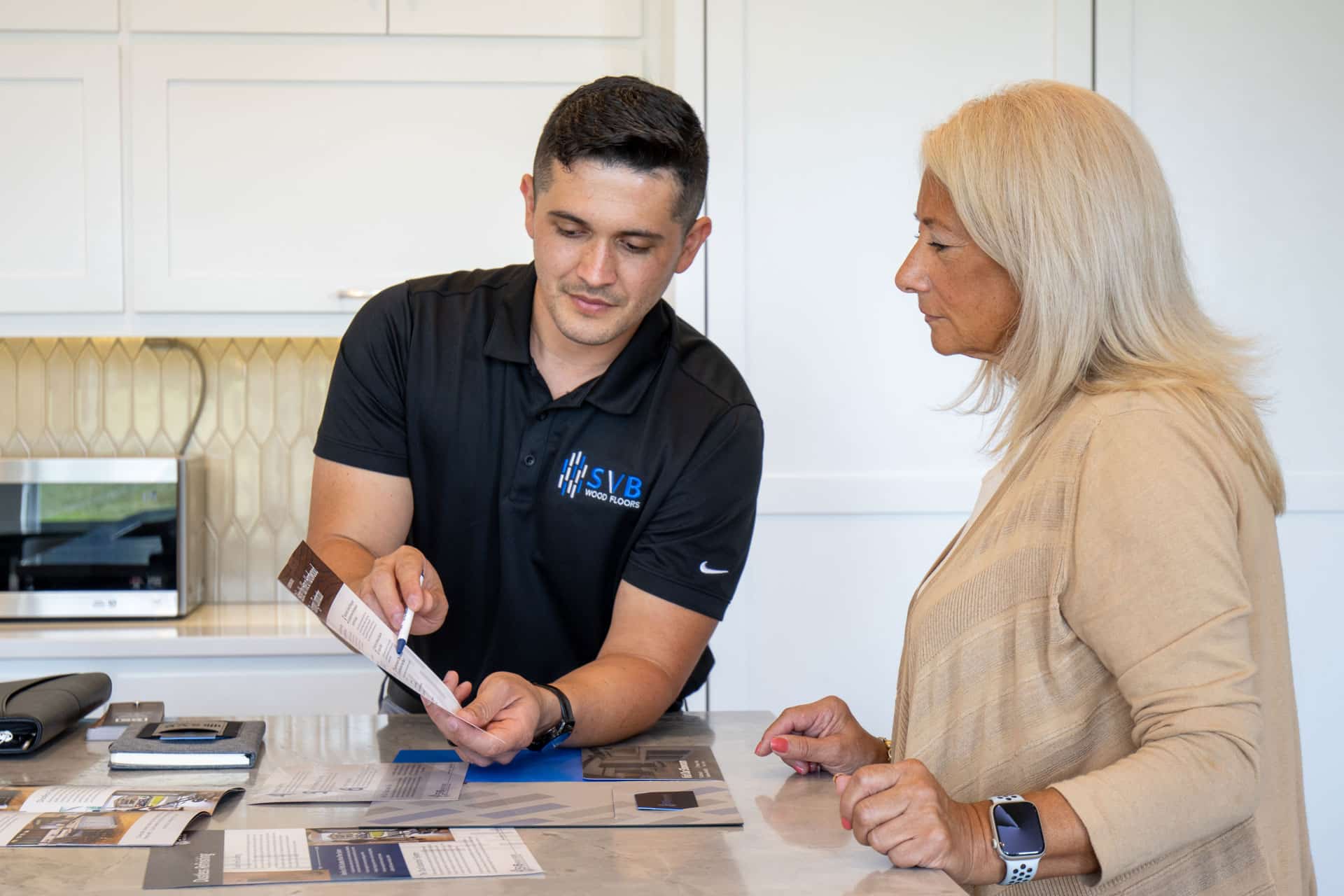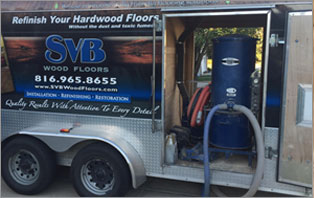
Water and wood don’t mix. When disaster strikes and your dishwasher leaks, your washing machine hose bursts, or your ice maker has a meltdown, your wood floors can pay the price. But how do you know if they are salvageable? At SVB Wood Floors, we’ve seen the worst. The good news is that no matter what happened, we can repair or replace them. The question is…which one will it be?
Acting Fast Could Save Your Flooring
Wood is a porous organic material that can only resist the effects of water for a short time. That’s why you must act fast to prevent damage from occurring. But sometimes, things happen that you can’t plan for. For example, you’re away on vacation and while you’re lying on a beach soaking up the sun, a pipe breaks and floods your kitchen which then remains that way for several days. Now what?
Signs of Water-Damaged Floors to Look For
- Staining and/or discoloration
- “Cupping”, the edges of the individual planks are raised higher than the middle
- “Crowning”, the middle of the individual planks swells and rises
- Buckling from absorbed moisture
- Popping nails
- Lifting of floorboards (especially from the ends)
- Mold growth (can occur within 48 hours of flooding)
Depending on how long the floor was wet, damage can vary. Considering that the normal moisture content in a typical hardwood floor is somewhere between 6 and 12 percent and a flooded hardwood floor can have a moisture content of up to 40 percent, damage potential is severe. Much of it has to do with the amount of time that the floor is exposed to the water. More moisture will be retained if the floor is left to dry on its own.
When To Decide: Floor Repair vs Replacement
Determining whether a water-damaged wood floor can be repaired or must be torn up and replaced will depend on a number of factors, including:
- The length of time the floor has been exposed to water.
- Whether your floor is solid hardwood or engineered hardwood.
- The severity of the damage. For example: Has the water penetrated into the subfloor?
- The floor’s finish. It can be difficult to match certain stain colors when replacing isolated floorboards, especially if the stain has changed over time.
Solid wood flooring gives you the broadest range of options for repair. Because it is solid wood throughout the entire plank, we can sand away up to 1/4 of an inch of the wood to remove cupping or surface mold. Once the planks are dry, we can restain. In addition, solid flooring can be replaced and new planks can be retrofitted more easily into the existing flooring. With engineered wood flooring, because only the top layer is real wood, there is less material to sand, which limits the repair options.
If the damage is minor, the floor can sometimes be saved by replacing affected boards and then sanding and refinishing the whole floor. If the damage is severe or extensive, causing significant expansion, the entire floor may need replacing – and sometimes even the subfloor will have to be replaced.
If you suspect water damage, the first step is to have the floor’s condition assessed by a hardwood flooring professional. Give us a call today and one of our hardwood water damage repair experts can help assess the situation and give you an estimate on repairing or replacing your wood floors!




